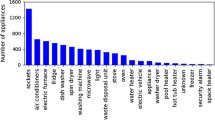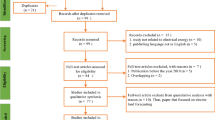Abstract
Prosumers are households that are both producers and consumers of electricity. A prosumer has a grid-connected decentralized production unit and makes two types of exchanges with the grid: energy imports when the local production is insufficient to match the local consumption and energy exports when local production exceeds it. There exists two systems to measure the exchanges: a net metering system that uses a single meter to measure the balance between exports and imports and a net purchasing system that uses two meters to measure separately power exports and imports. Both systems are currently used for residential consumption. We build a model to compare the two metering systems. Under net metering, the price of exports paid to prosumers is implicitly set at the price of the electricity that they import. We show that net metering leads to (1) too many prosumers, (2) a decrease in the bills of prosumers, compensated via a higher bill for traditional consumers, and (3) a lack of incentives to synchronize local production and consumption.
Similar content being viewed by others
Notes
It is also known as the single metering system.
The denomination dual or double metering and net billing are also often used in the literature.
Informations collected from the DSIRE website www.dsireusa.org.
See Jamasb and Pollitt (2007) for a general overview.
In a dynamic setting, we would interpret z as the leveraged cost of energy.
For households, Bost et al. (2011) report a share of self-consumption ranging from 11.8 to 32.1%. Lang et al. (2016) estimate a share of self-consumption of 40% for small residential buildings, this share is increasing up to 80% for large residential buildings and even 90% for office buildings. This difference can be explained by consumption patterns which are the highest for residential users when the solar radiations tend to be lower (before and after average office working hours).
In the literature on the production technology of a DSO, the electricity distributed measured either by the peak value or the total value is always a significant cost driver (see Jamasb and Pollitt 2001 for a survey). To give an example, Coelli et al. (2013) estimate an average cost elasticity of 0.25 for the electricity distributed with a significantly higher value in low density areas.
Only costs matter as surpluses are constant (by assumption).
It leads to characterize a local minimum C(z) as \(C^{\prime \prime }(z^{*})=f^{\prime }\left( z^{*}\right) \left\{ 0\right\} +f\left( z^{*}\right) k>0\).
Its existence is ensured as the function \(g\left( z\right) =z-\left[ \left( 1-\varphi \right) \theta +\frac{K_{l}}{k}\right] \frac{q}{q-F\left( z\right) k}\) is continuous over \(\mathbb {R}_{+}\) and varies from \(-\left[ \left( 1-\varphi \right) \theta +\frac{K_{l}}{k}\right] \frac{q}{q-k}<0\) and \( +\infty \). So it necessarily exists an intermediate value \(\tilde{z}\) such \( g\left( \tilde{z}\right) =z^{*}\).
Under net purchasing, some DSO record exports but do not impose an export fee and rather set \(r_{x}=0\).
This corroborates the empirical work of Picciariello et al. (2015) which shows substantial cross-subsidies from consumers toward prosumers for six US states.
With strict inequalities for \(K_{l}>0\).
Details are provided in the Appendix.
This is the case in Belgium: prosumers are connected with a single meter (net metering) and some DSO apply a specific prosumer fee to compensate for network costs. This prosumer fee is linked to the power installed (approximately 80 euros per KVA).
The same result would apply in the case of market-power at the retail level.
See Ringel (2006) for a comparison.
Some data are available since 2015 from the Energy Information Agency, www.eia.gov/todayinenergy/detail.cfm?id=23972.
References
Bennear, L. S., & Stavins, R. N. (2007). Second-best theory and the use of multiple policy instruments. Environmental and Resource Economics, 37, 111–129.
Borenstein, S., & Bushnell, J. (2015). The US electricity industry after 20 years of restructuring. Annual Review of Economics, 7, 437–463.
Bost, M., Hirschl, B., & Aretz, A. (2011). Effekte von Eigenverbrauch und Netzparität bei der Photovoltaik, i-ö-w.
Brown, D. P., & Sappington, D. (2017a). Optimal policies to promote efficient distributed generation of electricity. Journal of Regulatory Economics, 52(2), 159–188.
Brown, D. P., & Sappington, D. (2017b). Designing compensation for distributed solar generation: Is net metering ever optimal? Energy Journal, 38(3), 1–32.
Cai, D. W. H., Adlakha, S., Low, S. H., De Martini, P., & Mani Chandy, K. (2013). Impact of residential PV adoption on retail electricity rates. Energy Policy, 62, 830–843.
Coase, R. (1946). The marginal cost controversy. Economica, 13(51), 169–182.
Coelli, T., Gautier, A., Perelman, S., & Saplacan-Pop, R. (2013). Estimating the cost of improving quality in electricity distribution: A parametric distance function approach. Energy Policy, 53, 287–297.
CEER. (2017). Electricity distribution network tariffs. CEER Guidelines of Good Practice, Council of European Energy Regulators, C16-DS-27-03.
Darghouth, N., Barbose, G., & Wiser, R. (2011). The impact of rate design and net metering on the bill savings from distributed PV for residential customers in California. Energy Policy, 39(9), 5243–5253.
De Groote, O., Pepermans, G., & Verboven, F. (2016). Heterogeneity in the adoption of photovoltaic systems in Flanders. Energy Economics, 59, 45–57.
Dufo-Lopez, R., & Bernal-Agustin, J. L. (2015). A comparative assessment of net metering and net billing policies. Study cases for Spain. Energy, 84, 684–694.
Eid, C., Guillen, J. R., Marin, P. F., & Hakvoort, R. (2014). The economic effect of electricity net metering with solar PV: Consequences for network cost recovery, cross subsidies and policy objectives. Energy Policy, 75, 244–254.
European Commission. (2015). Best practices on renewable energy self-consumption. Commission staff working document, COM(2015) 339 final.
International Energy Agency Photovoltaic Power Systems Programme (IEA-PVPS). (2016). Review and analysis of PV self-consumption policies. Report IEA-PVPS T1-28:2016.
International Energy Agency Renewable Energy Technology Deployment (IEA-RETD). (2014). Residential prosumers-drivers and policy options (RE-Prosumers).
Jamasb, T., & Pollitt, M. (2001). Benchmarking and regulation: International electricity experience. Utilities Policy, 9, 107–30.
Jamasb, T., & Pollitt, M. (2007). Incentive regulation of electricity distribution networks: Lessons of experience from Britain. Energy Policy, 35, 6163–6187.
Lang, T., Ammann, D., & Girod, B. (2016). Profitability in absence of subsidies: A techno-economic analysis of rooftop photovoltaic self-consumption in residential and commercial buildings. Renewable Energy, 87(1), 77–87.
Luthander, R., Widen, J., Nilsson, D., & Palm, J. (2015). Photovoltaic self-consumption in buildings: A review. Applied Energy, 142, 80–94.
McLaren, J., Davidson, C., Miller, J., & Bird, L. (2015). Impact of rate design alternatives on residential solar customer bills: Increased fixed charges, minimum bills and demand-based rates. The Electricity Journal, 28(8), 43–58.
NARUC. (2016). NARUC manual on distributed energy resources rate design and compensation, a manual prepared by the NARUC staff subcommittee on rate design. Washington, DC: National Association of Regulatory Utility Commissioners.
Picciariello, A., Vergara, C., Reneses, J., Frías, P., & Söder, L. (2015). Electricity distribution tariffs and distributed generation: Quantifying cross-subsidies from consumers to prosumers. Utilities Policy, 37, 23–33.
Poullikkas, A., Kourtis, G., & Hadjipaschalis, I. (2013). A review of net metering mechanism for electricity renewable energy sources. International Journal of Energy and Environment, 4(6), 975–1002.
Ringel, M. (2006). Fostering the use of renewable energies in the European Union: The race between feed-in tariffs and green certificates. Renewable Energy, 31(1), 1–17.
Schmalensee, R. (2012). Evaluating policies to increase electricity generation from renewable energy. Review of Environmental Economics and Policy, 6(1), 45–64.
Yamamoto, Y. (2012). Pricing electricity from residential photovoltaic systems: A comparison of feed-in tariffs, net metering, and net purchase and sale. Solar Energy, 86, 2678–2685.
Author information
Authors and Affiliations
Corresponding author
Additional information
The authors thank the FNRS and the Walloon Region (Grant TECR) for its financial support. They also thank P. Agrell and participants at the Mannheim Energy Conference, the BAAE conference held at CORE/Louvain-la-Neuve, the 65th congress of AFSE Nancy, the Energy Symposium at University of Barcelona, the third FAERE Conference in Bordeaux, the EARIE conference in Lisbon, the IIOC conference in Boston and the workshop on electricity demand at Université Paris-Dauphine for comments and I. Peere for English editing.
Appendix
Appendix
Let \(L=C\left( F\left( \hat{z}_{\varphi }\right) \right) +F\left( \hat{z}_{\varphi }\right) \frac{\left( \hat{\varphi }-\bar{\varphi }\right) ^{2}}{2}+\lambda \pi ^{D}\), the Lagrangian function of the problem with \(\lambda \ge 0\) substituting (10) and (9). The Khun and Tucker FOC write, for \(i=m,x:\)
As \(\frac{d\hat{z}_{\varphi }}{dr_{m}}=\hat{\varphi }\) ; \(\frac{d\hat{z} _{\varphi }}{dr_{x}}=-\left( 1-\hat{\varphi }\right) \), \(\frac{\partial \pi ^{D}}{\partial r_{m}}=q-F\left( \hat{z}_{\varphi }\right) \hat{\varphi }k\) and \(\frac{\partial \pi ^{D}}{\partial r_{m}}=(1-\hat{\varphi })F\left( \hat{z }_{\varphi }\right) k\), after substitutions and some manipulations this leads to
We see that \(\lambda ^{*}=0\) implies \(\hat{\varphi }=\varphi ^{*}\) and \(\hat{z}_{\varphi }=z_{\varphi }^{*}\) with a grid tariff structure \(\left( \hat{r}_{m},\hat{r}_{x}\right) =(\theta -\frac{K_{l}}{k},\frac{K_{l}}{k})\) but with such tariffs \(\pi ^{D}=-\frac{q}{k}K_{l}<0\): a contradiction. So \( \lambda ^{*}>0\) and the joint first best cannot be implemented and the break-even constraint is necessarily binding. Then solving the FOC with respect to \(\hat{z}_{\varphi }\) and \(\hat{\varphi }\) leads to
which in turns implies in order to verify the break-even constraint that:
We verify that \(\lambda ^{*}=\frac{qf\left( \hat{z}_{\varphi }\right) }{ q-F\left( \hat{z}_{\varphi }\right) k}\left( \hat{r}_{m}-\theta \right) >0\).
Rights and permissions
About this article
Cite this article
Gautier, A., Jacqmin, J. & Poudou, JC. The prosumers and the grid. J Regul Econ 53, 100–126 (2018). https://doi.org/10.1007/s11149-018-9350-5
Published:
Issue Date:
DOI: https://doi.org/10.1007/s11149-018-9350-5








